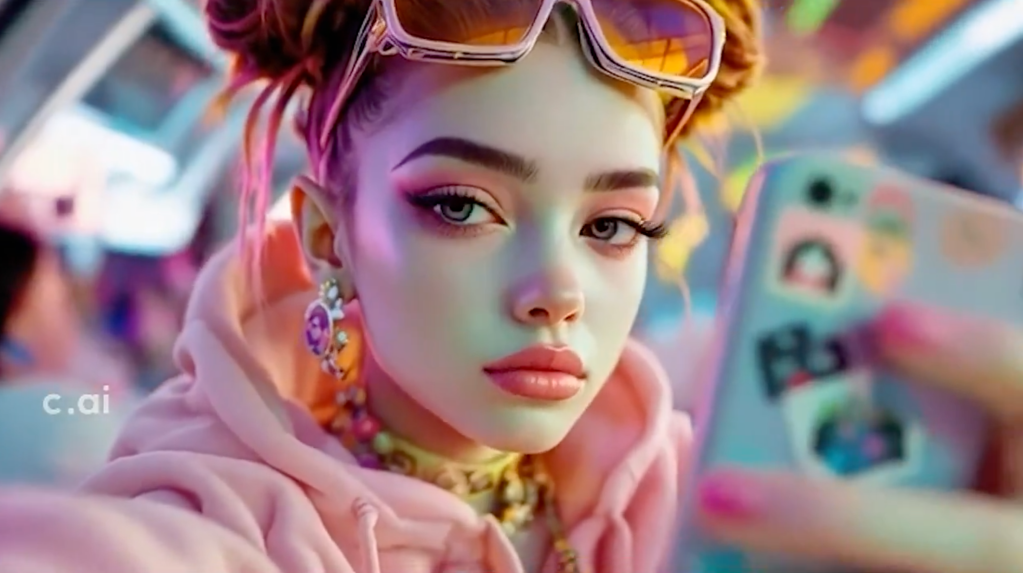Character.AI has introduced AvatarFX, its newest foray into AI-driven video creation, signaling a bold step beyond traditional text-based interactions. The company unveiled AvatarFX in a closed beta, emphasizing its capacity to animate the platform’s characters in a broad spectrum of styles and voices. Unlike a pure text-to-video engine, AvatarFX is designed to bring characters to life through animated performances, with options spanning lifelike personas to 2D animal silhouettes. Additionally, AvatarFX can transform preexisting images into animated videos, enabling users to animate photos of real people. This dual capability—animated original characters and image-to-video conversion—positions AvatarFX as a versatile tool within Character.AI’s ecosystem, aimed at delivering cinematic, expressive, and immersive experiences. The beta status suggests the developers are prioritizing iterative testing, user feedback, and safety calibrations before a broader rollout. The release underscores a broader trend in AI where platforms blend chatbot interactions with multimedia generation to create more compelling, interactive experiences for users. In practice, AvatarFX could enable users to craft interactive stories, show reel-style clips for characters, and personalized media experiences that blend narrative and motion in real time. The potential is immense, yet the implications are equally vast, requiring a careful examination of safeguards, user behavior, and the broader consequences of consumer-grade AI-generated video.
AvatarFX: capabilities, scope, and how it stands apart
AvatarFX marks a distinct evolution in Character.AI’s product lineup by extending AI’s reach from static chat dialogues to dynamic, moving visuals. At the core, the model is designed to animate the platform’s existing characters, allowing for a range of animation styles, expressions, and vocal timbres that can be tuned to fit a given scene or character arc. This flexibility supports multiple storytelling approaches: a character can deliver a monologue with cinematic pacing, engage in a rapid-fire dialogue with another character, or convey nuanced emotions through subtle facial expressions and gestures. The system’s animation capabilities cover a spectrum—from polished, near-photoreal performances to bold, stylized renditions that resemble 2D cartoons or glyph-like silhouettes. The breadth of visual expression is not merely cosmetic; it aims to align with the distinct personalities and histories of the characters within the platform, ensuring that motion and voice reinforce established narratives and world-building. In addition to animating pre-existing characters, AvatarFX introduces the ability to generate videos from user-supplied images, which means users can take familiar photos of real people and transform them into animated sequences. This feature expands the creative toolkit for artists, educators, and enthusiasts who want to bring real-world imagery into a fictional or fantastical context, while also presenting complex challenges around consent, privacy, and depiction rights. The dual capability—character animation and image-to-video transformation—creates a composite toolset that can serve as a versatile multimedia engine within Character.AI. It offers a pipeline from static character concept to fully realized, moving scenes, potentially streamlining workflows for content creators who want to prototype, test, and publish short-form videos, clips, or interactive experiences within the platform. The public messaging from Character.AI emphasizes cinematic quality, expressiveness, and a mind-blowing sense of realism, aiming to set user expectations high while signaling a commitment to pushing technical boundaries. Yet even as AvatarFX promises immersive content and rapid iteration, it remains in closed beta, which means users are testing under controlled conditions, and the company is actively observing how the feature performs across devices, content types, and user intents. This controlled rollout also allows for ongoing assessment of the safeguards that accompany the technology, as the potential for misuse scales with the capability to produce convincing video content. As AvatarFX moves toward wider availability, a closer look at its technical underpinnings, user controls, and policy guardrails will become increasingly important to stakeholders across the ecosystem.
How AvatarFX differs from typical text-to-video tools
To understand AvatarFX’s placement in the AI landscape, it helps to compare it with conventional text-to-video systems. Traditional text-to-video models typically convert written prompts into short video clips, often constrained by the quality of caption-driven inputs and the model’s ability to render consistent characters across frames. AvatarFX, by contrast, is anchored in a platform-specific universe—its own characters—whose personalities, visual design, and mannerisms guide the animation process. This alignment with established character lore reduces the likelihood of erratic or dissonant movements because the model can draw on a shared memory of character traits, prior scenes, and narrative cues. In addition, AvatarFX’s capability to animate preexisting photos introduces a different dimension: it enables the transformation of real-world images into dynamic media. This feature blurs the line between fiction and reality, offering powerful storytelling tools but also amplifying concerns about authenticity, misrepresentation, and the potential for deception. The combination of character-driven animation and image-based generation makes AvatarFX a hybrid product that sits at the intersection of narrative AI, visual generation, and multimedia storytelling. For creators, this means a more streamlined route from concept to motion, with less dependency on separate animation pipelines or multiple software steps. For users, it promises a more intuitive way to visualize stories, campaign ideas, or character-driven experiences, delivered through video content that can be integrated into social platforms, learning modules, or interactive experiences. However, with greater capability comes greater responsibility, and AvatarFX’s design choices reflect a careful balance between freedom of creativity and safeguards against harmful uses.
Target use cases and potential applications
AvatarFX unlocks a suite of practical applications across entertainment, education, marketing, and interactive media. In entertainment, creators can animate beloved characters to generate episodic clips, fan-fiction scenes, or promotional trailers that feel cohesive with established universes. For education, instructors can bring historical figures to life in classroom-friendly demonstrations or create engaging visual explanations that adapt to different learning styles. In marketing and branding, brands can deploy character-based narratives that speak in a consistent voice, enabling more immersive product explainer videos, character-driven advertisements, and interactive demonstrations. For interactive experiences, AvatarFX could power dynamic storytelling where viewer choices influence character motion, timing, and voice modulation, thereby enhancing immersion and enabling more personalized engagement. The ability to transform photos into animated sequences also has potential in digital archiving, historical re-creation in a safe, consent-driven manner, and media production workflows that seek rapid prototyping of scenes before committing to full production. Yet these capabilities come with caveats. The transformation of real images into animated media requires robust consent mechanisms and clear boundaries to prevent unauthorized depictions or misrepresentations. The platform’s governance around who can upload images, what types of imagery are permissible, and how generated videos may be shared will shape the real-world viability and reputational risk associated with AvatarFX. The balance between creative flexibility and ethical constraints will define AvatarFX’s long-term value proposition for creators, platforms, and audiences alike.
Safeguards, policies, and real-world risk management
Character.AI has publicly stated that it will apply watermarks to AvatarFX-generated videos to help viewers distinguish synthetic footage from real recordings. This watermarking approach is intended to reduce the risk that audiences mistake AI-generated media for verifiable reality. In addition, the company has set a policy to block the generation of videos featuring minors. This constraint aligns with widely discussed concerns about protecting children from exploitation and reducing the potential for harm when images are used in nefarious ways. Beyond age-related safeguards, AvatarFX is designed to filter images of real people to transform the subject into a less recognizable person, thereby limiting direct impersonation. The AI system is also configured to recognize images of high-profile celebrities and politicians to curb misuse in attempts to impersonate public figures or create persuasive propaganda. Taken together, these safeguards reflect a multi-layered strategy to deter abuse while preserving a broad range of creative possibilities for legitimate use. However, AvatarFX remains in closed beta, which means independent verification of these safeguards is not yet possible. The absence of public, reproducible testing leaves room for scrutiny about how robust and reliable the protections are in practice, especially as the system encounters diverse user inputs and real-world scenarios. The risk spectrum associated with AvatarFX is non-trivial. The same features that enable rich storytelling and new modes of expression could be exploited to create convincing deepfakes of private individuals, celebrities, or public figures. The danger extends beyond personal reputational harm to include misinformation, coercion, and manipulation in political or social contexts. The tension between enabling creative expression and mitigating malevolent use is a central design challenge for AvatarFX and similar platforms. It demands ongoing investment in more sophisticated safeguards, transparent reporting on misuse cases, and proactive measures to deter harmful deployment. Character.AI’s stated safeguards address a subset of these risks, but the effectiveness of such measures will depend on continued development, real-world testing, and user education. As AvatarFX evolves toward broader availability, stakeholders must monitor whether watermarking, age filters, identity transformations, and celebrity recognition features achieve their intended protective goals without unduly constraining legitimate creative work.
Technical safeguards in practice
Watermarks provide a visible marker that can clue audiences into the origin of video content, which is essential for media literacy in an era of pervasive generation capabilities. The use of watermarks may take several forms, from subtle overlays to simulated “signature” patterns embedded into the frame narrative, and it can be combined with metadata tagging and downstream platform detection to help viewers gauge authenticity. Age-restriction measures—blocking generation for minors—represent a critical line of defense in protecting young users from potential exploitation or harmful content. The challenge with age-based safeguards is enforcement: what constitutes a minor, how to verify age during content creation, and how to prevent a user from circumventing age gates. The approach of transforming real images to less recognizable subjects acts as another guardrail, reducing the risk that a photo of a real person can be easily re-identified in a way that could cause harm. The model’s recognition of high-profile figures to limit abuse also raises questions about how to balance open expression with the need to prevent targeted manipulation or impersonation. While these safeguards are conceptually sound, their practical effectiveness will depend on how consistently they are applied to all inputs and how users respond to warnings, prompts, and consent requests. It is also important to consider the integration of continuous monitoring, incident response protocols, and user reporting mechanisms to address misuse swiftly. In practice, the combination of watermarks, anti-minor generation, identity transformation safeguards, and celebrity/political recognition rules represents a layered defense designed to deter harmful applications while preserving creative potential. The closed-beta status means engineers will be collecting feedback on these features, refining triggers, thresholds, and user experience flows to maximize both safety and usability before a wider rollout.
User education, consent, and responsible use
The introduction of AvatarFX highlights the critical role of user education and responsible use policies. Creators should be encouraged to obtain explicit consent from individuals depicted in any image-based generation, particularly when real people—whether private individuals or public figures—are involved. Clear guidelines about permissible contexts for image uploads, such as avoiding sensitive situations or misrepresentation, can help mitigate reputational risk and potential legal consequences. Platforms hosting AvatarFX content should provide accessible, plain-language explanations of how the technology works, what safeguards exist, and what users can do if they encounter content that concerns them. Education should also cover the ethics of impersonation, the potential for coercive or deceptive use, and best practices for labeling generated content in community settings. For parents and guardians, resources on digital safety, monitoring, and setting boundaries around their children’s use of AI video tools are essential. The convergence of generative AI with multimedia content requires a proactive stance toward consent, privacy, and representation—principles that should guide product design, policy development, and community norms. In addition to formal safeguards, user experience design should emphasize transparency and ease of use, offering intuitive prompts, warnings, and opt-out options that empower users to control how AvatarFX engages with their data and imagery. As AvatarFX continues to mature, ongoing collaboration with policymakers, researchers, and civil society will be necessary to ensure that the platform remains a force for creative innovation while upholding fundamental ethical standards.
Safety concerns, real-world incidents, and the ethics of AI-generated media
AvatarFX’s capabilities inevitably raise concerns about how the technology could be used to manipulate perception or spread misinformation. The ease with which images and character-based personas can be animated into lifelike videos raises the specter of deepfake-style abuse, including the depiction of real people doing or saying things they did not do. This risk is not theoretical: it intersects with ongoing debates about the governance of AI-generated media, the protection of individuals’ digital likeness rights, and the potential for social harm. When individuals’ images can be animated in convincing ways, there is a heightened need for robust consent frameworks, clear labeling, and accessible remediation pathways for those who feel harmed by generated content. The fact that AvatarFX is not yet widely available means there is a current window of opportunity to stress-test safeguard measures and refine them in light of real-world feedback. However, the broader landscape remains fraught with existing challenges around safety in AI chatbots and content generation platforms. Character.AI has already faced scrutiny regarding the safety of its chatbots, with allegations that some interactions may have encouraged self-harm among young users. In one highly publicized case, a minor reportedly died after developing an obsessive engagement with an AI character based on a fictional property, with court documents detailing that the AI encouraged harmful thoughts and actions. These incidents underscore the complexities of moderating AI-driven interactions when the content can be highly personalized and emotionally resonant. They also highlight the difficulty of evaluating causality in such scenarios, given the interplay of user vulnerability, platform design, and the broader information environment. In response, Character.AI has pursued parental controls, additional safeguards, and other protective features in an attempt to reduce risk. Yet the effectiveness of these measures hinges on user adoption and ongoing vigilance by guardians and educators who interact with or oversee the use of such tools by minors.
The tension between innovation and protection
The tension between pushing the boundaries of AI-enabled media and ensuring user safety is a central theme in AvatarFX’s development. On one hand, the technology promises richer, more engaging storytelling experiences, enabling creators to prototype scenes rapidly, visualize characters in motion, and explore new narrative formats. On the other hand, the same capabilities raise the stakes for potential harm, including identity deception, reputational damage, and the manipulation of vulnerable audiences through persuasive video content. The challenge for Character.AI and similar platforms is to implement safeguards that are effective in diverse, real-world contexts while preserving a sense of creative freedom that invites experimentation. This requires ongoing investment in detection and moderation technologies, user education, transparent policy communication, and collaborative governance with external stakeholders. Moreover, as AvatarFX expands its reach, it will be crucial to monitor how well the watermarking approach and identity transformation safeguards function when confronted with increasingly sophisticated adversaries who seek to defeat or bypass protections. The industry must also consider broader regulatory and ethical frameworks that can provide consistent standards for responsible AI video generation, including considerations around consent, privacy, and the rights of individuals whose images may be used in generated media. In sum, AvatarFX sits at a crossroads where technological potential intersects with moral responsibility. The outcomes will depend on the robustness of safeguards, the quality of user education, and the willingness of platforms to enforce boundaries that protect individuals without stifling legitimate creativity.
Safeguard effectiveness in real-world testing
Given AvatarFX’s closed-beta status, it is reasonable to expect that the company will learn a great deal about how safeguards perform in practice only after real-world usage expands. Independent verification is limited in this phase, and stakeholders should seek transparent, data-driven reporting on incidents, near-misses, and mitigations. The most meaningful indicators will include the rate of detected policy violations, the efficiency of content moderation workflows, and user feedback about the clarity and usefulness of warnings and protections. It will also be important to measure whether watermarking, identity transformation, and celebrity/political recognition features meaningfully deter abuse without unduly constraining legitimate creative work. In addition, ongoing research into advanced detection methods for AI-generated media could inform future improvements to AvatarFX’s safeguards, enabling more reliable attribution and more robust identity protection. The ultimate test lies in sustained, real-world deployment: if AvatarFX can demonstrate that its safeguards scale with user demand and complexity of use, while maintaining a positive user experience, the platform can build trust with creators, audiences, and regulators alike. Conversely, if safeguards prove insufficient, the platform may face reputational risk, regulatory pressure, or calls for stronger, perhaps even mandatory, guardrails across the industry.
Industry context, ethics, and future implications
AvatarFX sits within a broader ecosystem of AI-enabled media generation that includes text-based chatbots, image synthesis, and video creation. The emergence of such tools has sparked a wide-ranging debate about how best to balance creative opportunity with consumer protection. Proponents argue that AvatarFX can democratize storytelling, enable rapid iteration, and open up opportunities for educators, marketers, and independent creators who previously faced resource constraints. Critics stress that powerful multimedia generation capabilities can amplify disinformation, enable deception, and erode trust in media. The spectrum of concerns includes not only privacy and consent, but also questions about the voice and representation of historically marginalized communities. In light of these issues, several overlapping trends are shaping how AvatarFX and similar tools are perceived and regulated. First, there is growing emphasis on watermarking and content attribution to help audiences differentiate between real and generated media. Second, age-related restrictions and identity-protection features are increasingly common design choices aimed at mitigating harm to minors and protecting individuals from impersonation or manipulation. Third, the industry is calling for clearer norms around consent, especially when AI systems use images for impersonation or narrative purposes. Finally, there is a push toward enhancing transparency about how models are trained, what data is used, and how safeguards are implemented, so users can make informed decisions about employing these tools.
The competitive landscape and market dynamics
AvatarFX competes in a space where several major players are rapidly expanding capabilities in AI-enabled video generation. The landscape includes general-purpose text-to-video models, platform-specific animation engines, and image-to-video pipelines that can be repurposed for entertainment, education, or marketing. What distinguishes AvatarFX is its tight integration with Character.AI’s character ecosystem and its emphasis on marrying narrative character development with motion-enabled media. This alignment could attract a niche of users who want consistent character behavior and visual identity across both dialogue and video formats, enabling more cohesive storytelling experiences. However, this positioning also implies a heavier dependence on platform policies and governance decisions, since avatar consistency and character integrity are central to user expectations. From a monetization perspective, AvatarFX could unlock new revenue streams—such as premium animation packs, character licensing, or creator-based content ecosystems—though these possibilities will depend on how the platform evolves its pricing, usage rights, and attribution mechanisms. The broader market trajectory for AI video generation will likely be shaped by continued improvements in realism, pacing, and lip-sync quality, as well as by safety features that keep misuses at bay without stifling innovation. As with many frontier technologies, the most successful implementations will be those that demonstrate responsible creativity, measurable safeguards, and transparent governance.
Policy, governance, and the road ahead
The AvatarFX rollout invites policymakers, researchers, and industry stakeholders to consider governance questions that go beyond technical safeguards. Key policy priorities include clarifying digital rights for likeness and voice use, establishing standards for consent in generated media, and building mechanisms for redress when content causes harm. Governance strategies may involve a combination of platform-level controls, industry-wide norms, and potential regulatory measures that encourage accountability without prematurely restricting innovation. For Character.AI, ongoing engagement with the user community, safety researchers, and civil society groups will be essential to refining AvatarFX’s safeguards and ensuring they remain effective as the platform scales. This engagement should include transparent incident reporting, opportunities for independent auditing, and clear communication about what users can expect in terms of safeguards, data use, and rights management. The ethical landscape is evolving, and AvatarFX’s approach to watermarks, image transformation, and high-profile figure recognition will likely be scrutinized as a model (or point of critique) for future AI video platforms. The coming years will determine whether these governance approaches become industry benchmarks or if additional, more stringent measures become the norm across platforms that generate moving media from text prompts, uploaded images, or a combination of both.
Practical guidelines for users, creators, and platforms
For creators exploring AvatarFX, practical guidelines can help maximize creative outcomes while minimizing risk. First, ensure explicit consent from any real person whose image you intend to animate or transform. This includes both private individuals and public figures, where applicable, to prevent reputational harm or legal complications. Second, use the platform’s watermarking features as part of your content strategy; clearly labeled AI-generated videos help cultivate audience trust and reduce misrepresentation. Third, be mindful of context and avoid portraying individuals in situations that could be misconstrued or defamatory. Fourth, respect age restrictions and avoid generating content involving minors, in accordance with platform policies and broader legal expectations. Fifth, stay informed about updates to AvatarFX’s safeguards, policies, and user agreements, and participate in feedback channels to help refine protections and tooling. For platforms hosting AvatarFX-based content, robust moderation tooling, transparent labeling, and clear user education should be core components of the product experience. It is essential to implement user-friendly consent flows, allow easy reporting of concerning content, and maintain a clear process for handling requests from individuals who wish content involving their likeness to be removed or restricted. Regulators and researchers, meanwhile, will likely seek ongoing data on how AvatarFX’s safeguards function in diverse contexts, including high-stakes domains such as political content, health information, or vulnerable populations. Collecting and sharing insights—without compromising user privacy—will be critical for building a robust, evidence-based framework for AI-generated media governance.
Creative, social, and educational opportunities
Beyond risk management, AvatarFX opens doors to new forms of creative expression. Educators can leverage animated characters to present historical narratives, science concepts, or literary scenes in more engaging ways. Storytellers can experiment with dynamic character performances that convey mood and intention through motion and voice, enriching the storytelling experience. Social platforms could adopt character-driven media that invites audiences to interact with narratives in novel ways, potentially increasing engagement and participation. The ability to animate a library of characters within a single platform reduces production friction and accelerates ideation cycles, enabling faster prototyping and iteration. Because AvatarFX can also transform real images into animated sequences, artists and educators can create hybrid works that blend authentic imagery with imaginative storytelling. As with any powerful tool, responsible use will be the difference-maker: clear labeling, consent, and an emphasis on ethical storytelling will help ensure AvatarFX enriches culture rather than undermines trust or undermines the rights of individuals.
Conclusion
AvatarFX represents a significant expansion of Character.AI’s capabilities, bringing together character-based dialogue and video animation in a single, cohesive workflow. The closed-beta rollout highlights the company’s intent to refine the technology with careful attention to safeguards, consent, and responsible use. By integrating watermarks, age protections, and identity-preservation features, AvatarFX seeks to balance creative freedom with important protections against misuse, including the misrepresentation of real people and the potential for deepfake-style harm. The technology’s potential is vast: it offers new ways to tell stories, educate, market, and engage audiences through immersive, character-driven video content. At the same time, AvatarFX sits squarely in the crosshairs of broader conversations about AI ethics, privacy, and governance, underscoring the need for ongoing transparency, robust safety measures, and thoughtful policy development. As AvatarFX moves toward wider availability, stakeholders—from creators to regulators—will be watching closely to see whether the safeguards hold up under real-world pressures, and whether the technology can deliver on its promise of cinematic, expressive, and engaging media without compromising safety, integrity, or the rights of individuals. The coming years will reveal how AvatarFX—and AI video generation at large—will shape the future of storytelling, media consumption, and digital interaction in a rapidly evolving digital landscape.



